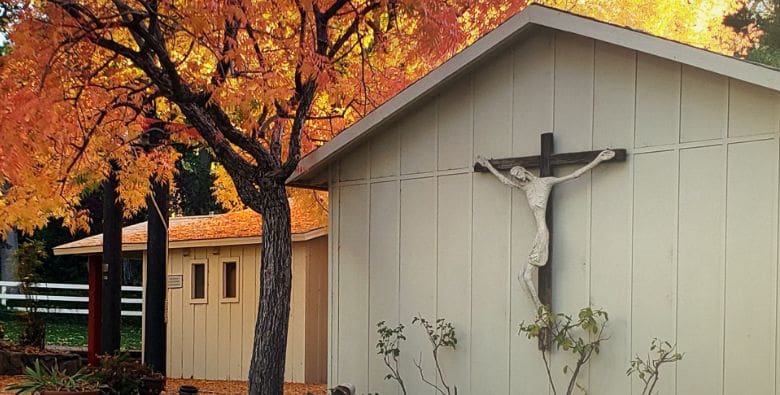Br. Angelus Echeverry, O.S.B.
There is a well-known surrealist painting by Salvador Dali entitled ‘The Hallucinogenic Toreador.” It is a very large image combining symbolism with optical illusion. The whole scene takes place in a bullfighting ring; and although there are many elements to the work, the Toreador, or bullfighter, is the centerpiece of it, yet initially he is not seen…he is hidden. You have to look at it for a while…then, hopefully, somewhere between the floating images of multiple “Venus de Milos,” he appears! Her bosom becomes his nose, her long skirt makes up his white shirt and red scarf. I remember when I first saw it in person…in a way I felt privileged to be able to ‘see’ the true meaning of the painting. I was amazed to think how we can look at something, know that we are looking at it, and still not be able to see what we are intended to see. It’s as if the very eyes which permit us to look, keep us from seeing….until they finally do!
Jesus’ parables are often this way. On the surface, they may appear devoid of meaning, even confusing, but are really designed to awaken the spirit in us toward Truth. These “word pictures” were among Jesus’ favorite ways of teaching…they challenged the hearer, and pointed to God in ways that simply having knowledge about something never could. They were designed to lead us to the ‘mystery,’ meaning to God’s divine plan, to his Kingdom present in Jesus’ ministry; leading us at once into God’s Self, and out of our selves. They were designed to open the Eye of the Heart, that we might see the true vision of God; not mystically necessarily, but by trust, humility, and faith. All who believe in God, ‘see’ him. Those who don’t believe, even if they are looking, cannot see because they are looking in the wrong places, in the wrong way — toward things, at possessions, focusing on power, or only in themselves.
Our Lord tells us that the mysteries of the Kingdom have been revealed to the ‘little ones’…..that they are the ones who can see. Here, Jesus was referring specifically to children. But why should they be able to ‘see’ what, apparently, the grown could not? Children’s eyes do ‘see’ the world differently than ours. They look at life with wonder and curiosity. For children, life is still new. But isn’t life always new at each moment? It is for those who are awake, for those who are mindful of God at every moment. Add to this, children’s innocence, their purity of heart and their ability to forgive and suddenly we can begin to understand a bit more why their eyes are different than ours — than we who hold grudges, who complain about the tedium of life, who look back with regret, or forward in fear, who waste precious time, whose bodies though sitting in the moment, have their minds somewhere else…and it all happens while the heart patiently waits….for us to ‘see’ God with us…in that very moment.
What is required are “spiritual eyes of love” — eyes that find Him everywhere — that will follow God in both consolation and desolation. Jesus follows us through our garden moments and our desert ones, he is not a fair-weathered friend, but a constant companion. This Christian mindfulness, this attention to Christ’s pervading presence leads us to repent again and again…a sort of perpetual conversion. Monks make a promise of monastic conversion…this is the daily renewing of our vows to desire to change for the better, for God, each and every day. This mindset, or better yet, ‘heart-set,’ will allow us to see with proper eyes the Kingdom in our midst, and the newness it brings at every moment. Only a humble, trusting soul, a ‘little one,’ can have eyes to see the “mysteries”…a certain seeing… by faith.
Jesus’ parables, like Dali’s “Toreador,” reveal something hidden. In Christ’s case, he reveals to us the reality of God in our midst. Sometimes finding Christ is like finding the ‘Toreador.’ Yet only by continuing to look for him in the canvas of life will we find him….in our joys and sorrows, in our friends and enemies, in our very selves. And when we do find him, he won’t be an optical illusion, but a true likeness — love incarnate. In the Eucharist we are about to receive God is present yet remains hidden. If we can see Him in this mystery, let us give thanks,if we do not, pray that the Holy Spirit will give us ‘true eyes’ to see.


Send Us a
Prayer Request
Every day the monks include the petitions they receive when they pray the Liturgy of the Hours. Let us know how we can pray for you!